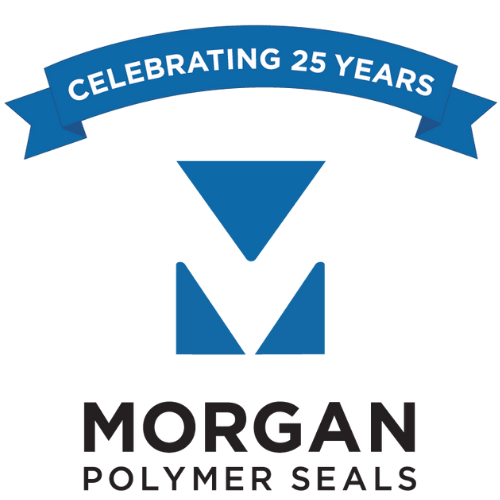Successful Seal Design: How To Select the Right Material
A strip of green Fluorocarbon (FKM) raw material.
by Mark Conlee, Engineering Director
Selecting the best raw material for an automotive gasket is paramount to manufacturing a quality seal at a competitive price. Most gaskets and seals are not made with latex - the natural (organic) rubber extracted from rubber trees - but with synthetic rubber compounds: petroleum-based polymers formulated by chemists.
To select the best material for an automotive application, a design engineer considers many attributes of a material’s capabilities, including its tolerance to these factors:
Temperature
Pressure
Liquid
Vapor
Selecting the Best Material vs. a Material That Simply “Works”
While there is often more than one polymer that could be used to mold a satisfactory seal, selecting the optimal material saves time and money. Why spend extra money to mold with an expensive high-performance material when a lower-cost material will seal just as effectively? Conversely, molding an inappropriate material for an automotive gasket can increase manufacturing costs by making the molding process more difficult and increasing scrap rates. Moreover, the wrong material will reduce system performance by not properly sealing the system and eventually lead to critical system failures, potentially costing countless dollars in recalls and repairs.
An expert seal designer thoroughly understands the key attributes of their polymers and draws from industry experience with automotive systems to select the best material.
This article highlights the polymers commonly used in automotive gaskets and seals and provides an overview of the compound’s capabilities for sealing powertrain, fuel, and electrical systems.
Common Polymers Used in Automotive Seal Design
Natural organic rubber is sometimes used to make seals for automotive noise, vibration, and harshness (NVH) applications, but most other automotive applications are made with petroleum-based synthetic rubber compounds.
These are the most common polymer compounds used for sealing automotive systems:
Compatibility chart of common polymers used for automotive gaskets.
Fluorocarbon (FKM), commonly referred to by the trade name VITON®, FKM has excellent fuel resistance and is often used for high-temperature applications in fuel systems. FKM also achieves superior volatile organic compounds (VOC) emission containment and has gained automotive acceptance for California Air Resource Board (CARB) compliance. Costs for this material can vary considerably, especially for low-temperature environments, so it is essential to thoroughly understand the application to specify a formulation that properly balances cost with performance.
Automotive products molded with FKM include:
Port seals
Throttle body seals
Fuel rail seals
Capless refueling seals
Specialty applications (ex. cam cover seals)
Hydrogenated Nitrile Butadiene Rubber (HNBR) is a lower-cost alternative to FKM, and is used in fuel applications. In this compound, the Hydrogen atoms are introduced to the NBR chemical backbone to improve its physical strength and resistance to heat, oil, and oxidation. Compared to FKM, HNBR has reduced VOC emission control.
Automotive products molded with HNBR include:
Fuel seals
Polyacrylate (ACM) and Ethylene Acrylic (AEM / Vamac®) are often used for engine oil and transmission fluid sealing. ACM is noted for its heat resistance and is a good choice for oil seal and engine sealing applications, including PIP gaskets and carrier gaskets in powertrain systems.
Automotive products molded with ACM include:
Transmission fluid seals
Nitrile Butadiene Rubber (NBR), also known as Buna N, the “N” stands for acrylonitrile (ACN). The acrylonitrile segment of the molecular structure gives this material excellent tensile strength, abrasion resistance, as well as fuel and oil resistance. However, this material is limited in its resistance to ozone and sunlight and is not an ideal application where weathering is the primary consideration. NBR performs well in petroleum oils and fuels, silicone oils and greases, Ethylene glycol, some acids, and water below 212F.
Automotive products molded with NBR include:
Grommets
Ethylene Propylene Diene Monomer (EPDM) has good weathering and ozone resistance. EPDM is often used as a lower-cost material for seals that are not subjected to aggressive fluid.
Automotive products molded with EPDM include:
Grommets
PIP gaskets
Silicone (VMQ) is a middle-cost compound that exhibits excellent tear strength, as well as low-temperature and high-temperature resistance.
Automotive products molded with VMQ include:
Grommets
Carrier Gaskets
Liquid Silicon Rubber (LSR) is more expensive than standard silicone, but it also has a much faster cure cycle, which helps offset the higher price. LSR exhibits superior conductivity resistance.
Automotive products molded with LSR include:
Filter plates that seal the interface between the transmission electro-hydraulic control module (TECHM) and the transmission valve body.
An experienced design engineer knows how to select not just a good material for a seal application - but the optimal material for a seal. Selecting the best polymer for an automotive gasket requires an in-depth knowledge of the compound’s capabilities and an understanding of the sealing environment. Getting help from an expert design engineer could save countless hours and dollars in production costs, so make sure to select the best material before production begins.
For help selecting the right polymer compound for your specific application, click the button below to contact Morgan Polymer Seals.


